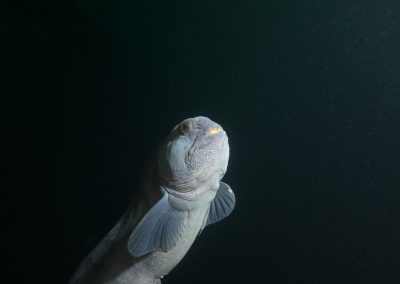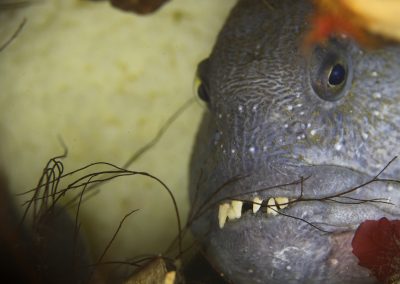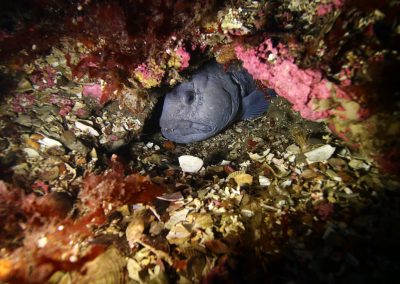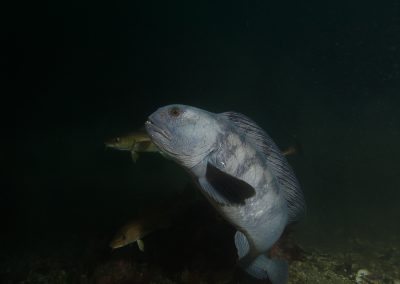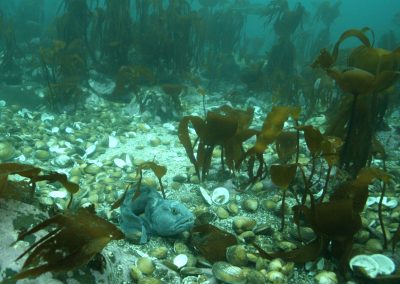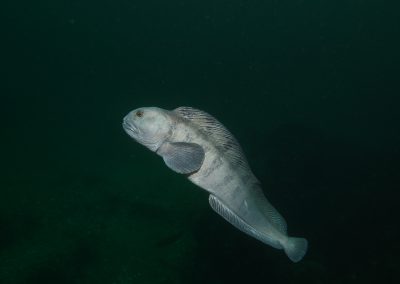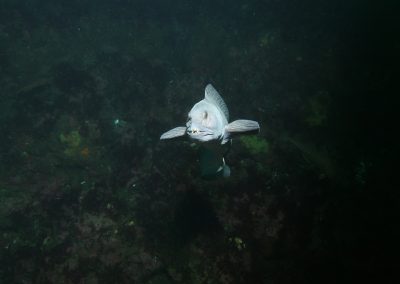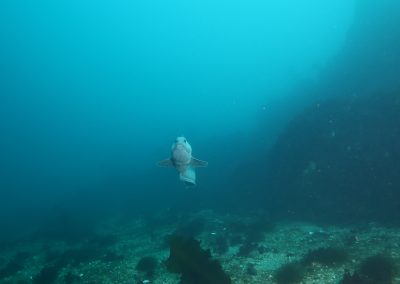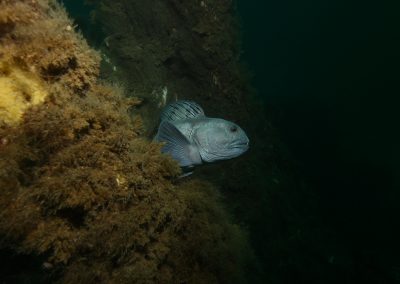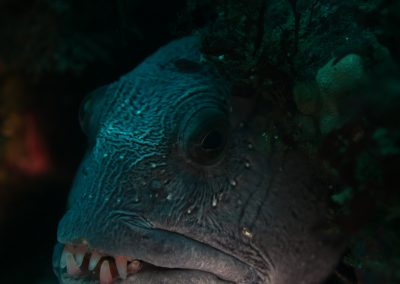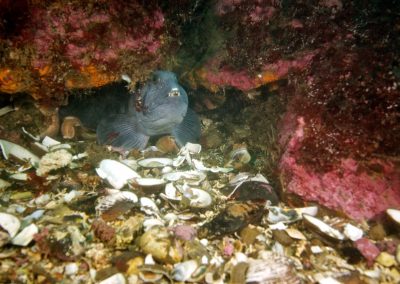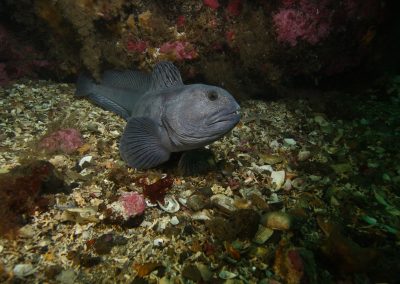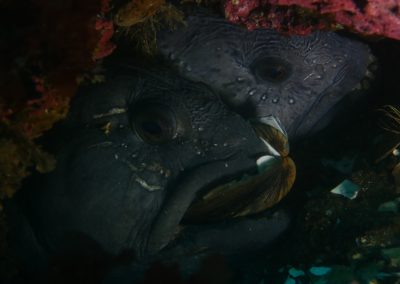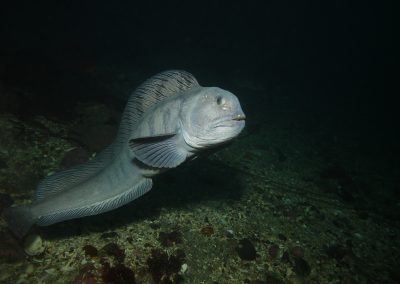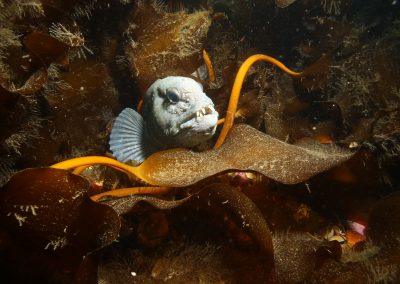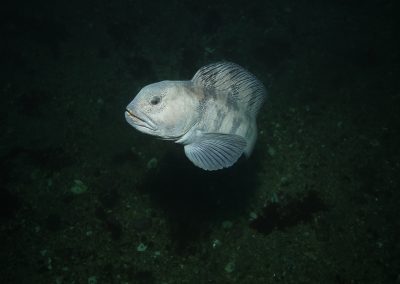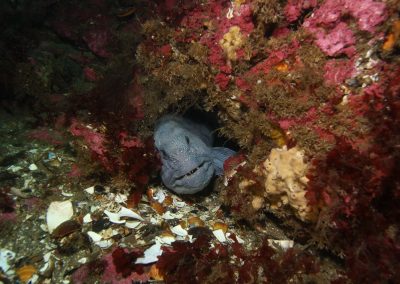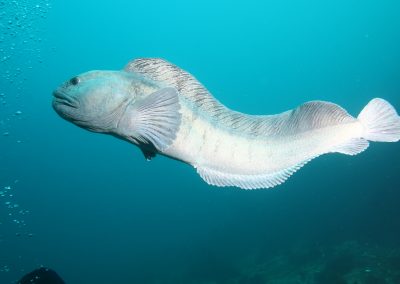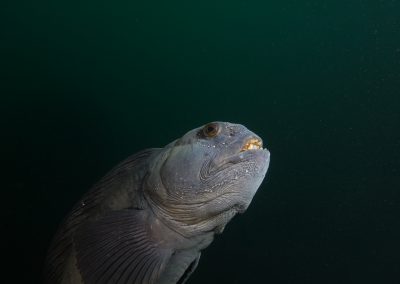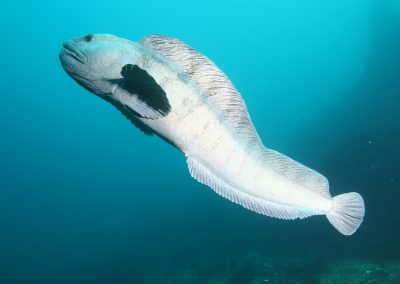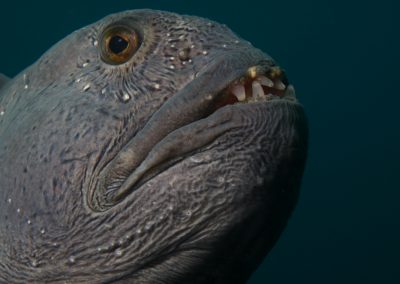Atlantic wolffish
Anarhichas lupus
The wolffish is a generous sized, rather long fish, usually around 50 to 80 cm long, but the largest individual caught in Icelandic waters measured at 125 cm.
Distribution
It is found all around Iceland but is most common off Vestfirðir (Western-fjords) peninsula in the west. It occurs over all types of bottom at depths between 40 to 200 m. It is found in European waters from Murmansk in the north to the English Channel in the south. It is also around the Faroe Islands, in southern Greenlandic waters and from Labrador to Cape Cod in North America. But it seems that the Atlantic wolffish in nowhere as common as around Iceland.
Ecology
The wolffish has enormously strong jaws and teeth. In fact, so strong that it must be handled with caution by fishermen. However, these strong jaws are not put there by nature to bite fishermen but to crush hard shelled shellfish and echinoderms as these are the main food of the wolffish. It also feeds on fishes, such as capelin, when available.
The main spawning takes place at 160-200 m depth off Vestfirðir peninsula in autumn and early winter, as opposed to most other fish that spawn in late winter and spring. Some spawning also occurs all around Iceland. They usually spawn in holes and crevices and unlike most other fish, the wolffish guards the eggs until they hatch. Usually it seems to be the role of the males to do that. During this time, they lose their teeth and do not eat. The eggs are large and slow to hatch.
Wolffishes in Eyjafjöður (Island-fjord), North Iceland, usually spawn in the beginning of September but the eggs in February or March. While the spawning time does not seem to depend on temperature the hatching time does, the lower the temperature the slower the hatching time. Preferably, when the eggs hatch in the spring the spring bloom is about to start and plenty of food is available for the larvae. After the eggs hatch the adults migrate back to other areas around Iceland to feed. Growth rate is slow, but it can reach more than 20 years of age.
Fisheries
Most of the fisheries were in March or April when the hungry wolffish migrated back from the spawning grounds. These fisheries were mostly by longline. The fisheries are now spread more evenly over the year, in other seasons of the year, the wolffish is a prized bycatch in other longline, trawl or Danish seine fisheries.
HÞV




